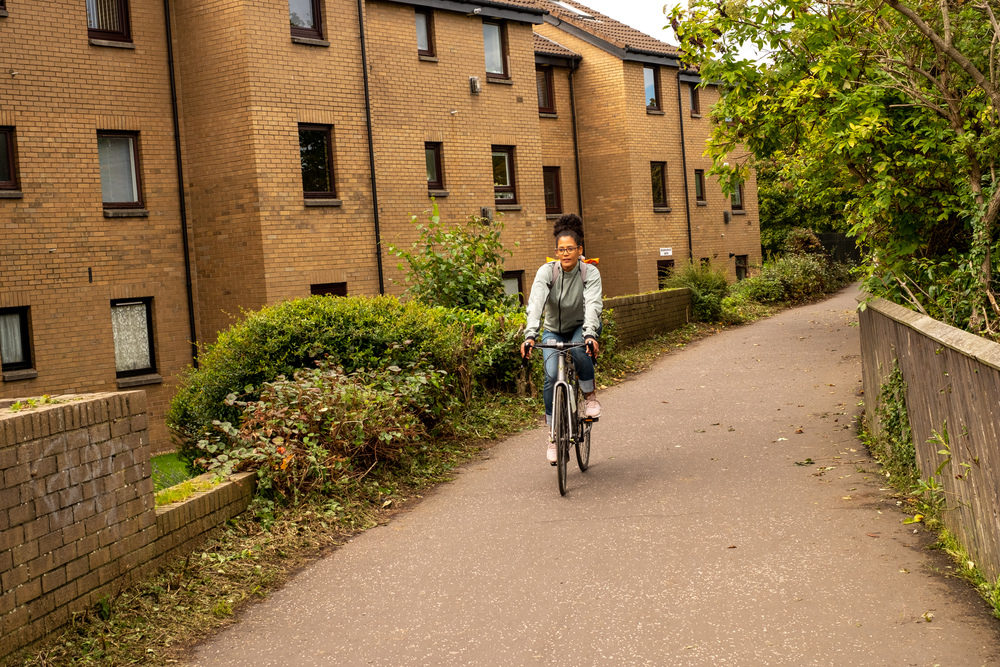
Mark McIntyre, Media & Communications Officer, Cycling Scotland
In early December, Cycling Scotland released our annual Attitudes and Behaviours Towards Cycling in Scotland Report 2022.
Now in its fourth wave, this annual research with more than 1,000 people across Scotland, gives us a regular snapshot of what people in Scotland think about cycling: what are the biggest barriers to riding a bike regularly? How often do they choose to cycle compared to using other modes of transport? And importantly, what encourages them to want to cycle more often?
Each year there is something interesting to be found in the data. Last year we found that there had been a 30% increase since 2017 in the number of people reporting that they cycled at least regularly or occasionally() with the number of people saying the environment was a motivating factor more than doubling.
This year, however, one thing stood out to us more than anything else: a big rise in people showing interest in cycling as a way of saving money.
What does the research show?
In our most recent wave of research, saving money had become one of the biggest reasons for people thinking about making more of their journeys by bike.
The relatively low cost of owning and riding a bike was cited by almost twice as many respondents as a reason for cycling in 2022 (29%) than last year (17%). Of the people who said they were interested in cycling more journeys in future, more than two-thirds (69%) said saving money was one of their main motivations.
More than this, the number of people who said that saving money was their single biggest motivating factor for cycling more often, more than doubled, from 8% in 2021 to 20% in 2022.
With rising prices, inflation, and the current cost-of-living crisis, it is perhaps little surprise that people would be looking for ways of saving money when it comes to transport.
Cycling as a low-cost means of transport for all
Travelling by bike is especially useful in urban locations and for short journeys, where you can often get to your destination much faster and with more reliability than you would by car.
Supporting more people to cycle is a vital step that we can’t overlook when it comes to tackling transport poverty, as a way of connecting people to jobs, education, and the services they need.
During the pandemic, a combination of quieter roads and restrictions on public transport encouraged many of us to walk and cycle many more of our journeys than before. Having gotten a taste of what cycling can offer, more people are discovering just how much money they can save on fuel each week, even just by swapping a few car journeys for their bike wherever possible. Laura, a social worker in Glasgow, told us “I’ve discovered that cycling is so much cheaper than driving. I save loads, and although I don’t cycle every day, it’s saving me £40 to £50 a month on fuel.” For so many people, this extra saving will have a real impact.
Steps needed for more people to cycle
There is much work still to be done to make sure that anyone, anywhere in Scotland can benefit from the freedom and independence that cycling can offer, from installing separate cycle paths to improving road safety, providing fair access to bikes for people on low incomes, to making sure that more people have somewhere safe and secure to keep their bike.
Our recently announced £2 million fund to help local authorities install secure bike storage for residents in tenements, apartments and high-rise housing across Scotland, is one example of working towards this fairer future.
As more funding is prioritised in coming years for all-important safe cycling infrastructure, making it possible for more people to access an affordable and reliable way to get around will be vital.


Enter your email address to receive regular e-updates about our work. If at any time you want to stop receiving these, simply contact us. We’ll keep your details safe and won’t share them with any other organisations for their marketing purposes. For full details see our Privacy Policy.